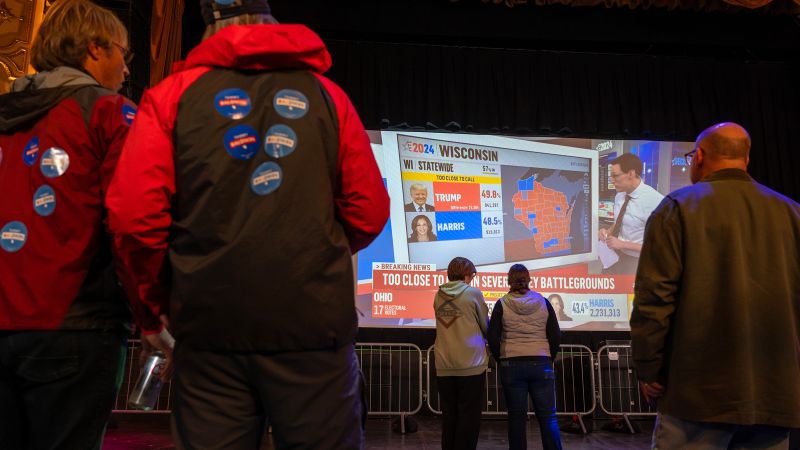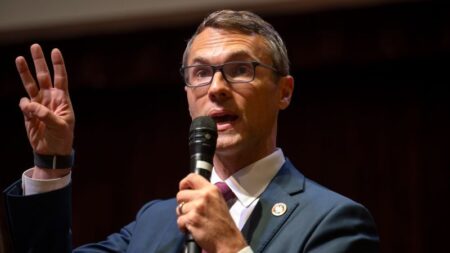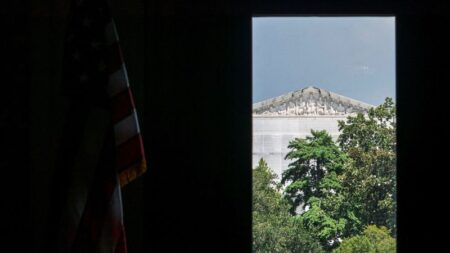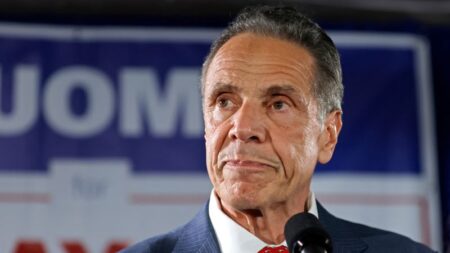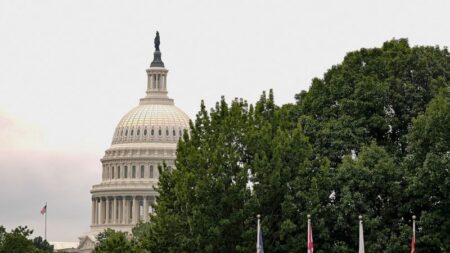In modern society, many individuals exhibit a keen interest in political engagement, often fueled by a desire to remain informed about ongoing national and global issues. Those who actively follow political news typically find themselves immersed in social media discussions and various news outlets. If you identify with this pattern, you’re part of a dedicated cohort that makes it a priority to stay updated on the latest developments in the political arena. However, this fervor for political knowledge is not universally shared across the populace.
Recent insights provided by a CNN poll, conducted by SSRS, indicate a clear division in the way Americans consume news. The findings reveal that the population roughly splits into three distinct groups based on their engagement levels. To elaborate, 32% of individuals often seek out news and remain up-to-date. Meanwhile, a middle segment, comprising 31% of the surveyed population, claims to be aware of significant political happenings without actively pursuing this information. The most disengaged group, representing 37% of those surveyed, includes 25% who pay attention to politics only when circumstances demand and an additional 12% who largely ignore political developments altogether.
Understanding these engagement metrics is pivotal when examining the landscape of American politics. The nuances of voter perspectives can be reflected through the varying degrees of news engagement. For instance, individuals who exhibit high political engagement have shown a resistance to aggressive governmental actions, such as deploying military troops during civil demonstrations. Notably, polling data from earlier in the year indicated that President Donald Trump’s performance regarding immigration resonated more positively with voters who had not been exposed to specific instances of detentions and deportations. Moreover, the majority of highly engaged Americans perceive the integrity of the nation’s democracy as being under threat.
The engagement data also points to a stark ideological divide. Specifically, individuals identifying as very liberal or very conservative are typically more politically plugged in than their counterparts who align as moderate or slightly liberal. The poll reflects that 51% of very liberal individuals and 47% of very conservative individuals are engaged, contrasting sharply with just 29% of moderates and a mere 22% of somewhat conservative individuals.
Take Robert Timm, a 75-year-old Democrat from Ukiah, California, as a representation of the highly engaged voter. Timm meticulously follows political developments every day, beginning with a morning headlined read on platforms like Yahoo and concluding with evening news on MSNBC. He openly expresses his deep concerns about the political climate, particularly about President Trump’s actions, highlighting the authoritarian tendencies he believes jeopardize the populace’s welfare.
The poll also suggests that age factors heavily into news engagement, with 52% of those aged 65 and older actively seeking political news compared to significantly lower numbers among younger populations. Furthermore, educational attainment and socioeconomic status play critical roles; those with college degrees and higher income levels exhibit heightened engagement. The majority of highly engaged respondents espouse clear distinctions between political parties and express widespread concerns about the stability of democracy.
Conversely, among those who exhibit lower engagement, nearly 40% report a disconnect with both major parties, perceiving them as largely similar. For instance, participant Tyler Ruth from Hilton Head, South Carolina, articulated her disillusionment, asserting that both parties ultimately serve the same interests due to their financial backing and power dynamics, leaving less affluent citizens without representation in their political agendas.
Moreover, nearly half of those with minimal engagement express skepticism regarding the efficacy of either party in enacting substantial change. Additionally, only 37% of these less-engaged individuals believe that democracy is facing an assault, a striking contrast to the views held by the more engaged populace.
Cultural and socioeconomic barriers also influence engagement patterns. Many younger individuals, people of color, and those from lower-income families identify as less politically active, often citing life priorities as detractors from political engagement. However, they still manage to receive snippets of political information through various channels.
In light of personal circumstances, Ruth has shifted her stance on political engagement, now feeling compelled to closely monitor political events due to potential impacts on her children with special needs. The CNN survey overall indicated that even those who follow politics sparingly still manage to stay informed, affirming that nearly half voted in the previous election, thereby demonstrating a level of political engagement that cannot be overlooked.
A particular respondent, Peter Montes from Conroe, Texas, embodies the mixed feelings many have toward political parties. He believes that a reformation of the party system is necessary. Montes, whose attention to political affairs has been rekindled by Trump’s administration, noted a general disinterest toward upcoming elections, choosing instead to maintain a casual awareness of political developments.
In conclusion, the CNN poll, executed between May 5 and May 26 among 2,539 adults, reveals the varied landscape of political engagement in America, highlighting demographic divisions and individual sentiments. While a dedicated core of individuals follows the political scene closely, a significant portion of the populace remains ambivalent or disengaged, illuminating a challenging terrain for political discourse and party dynamics





